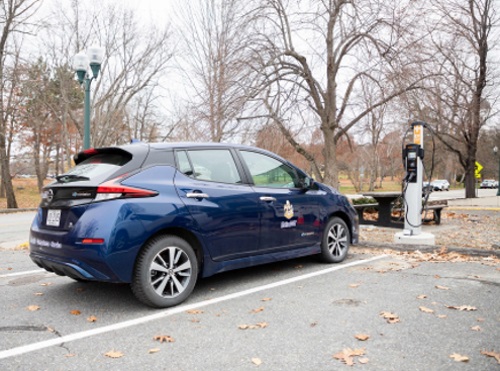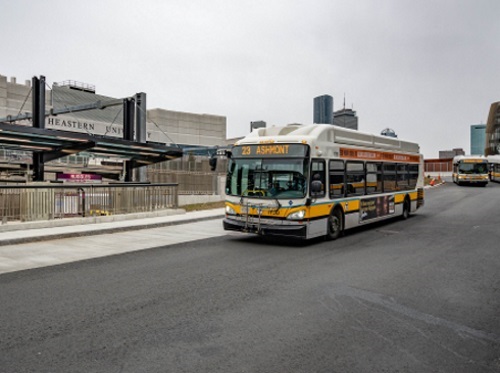FEDERAL ACTION
AASHTO Issues New ‘Commuting in America’ Reports -AASHTO Journal
AASHTO Seeks ‘Balanced’ EV Charging Network Effort -AASHTO Journal
AASHTO Comments on Low Carbon Construction Material Rules -AASHTO Journal
States seek Supreme Court intervention on smog plan split -E&E News
Key takeaways about the condition of US bridges and their role in the economy –AP
Buttigieg rejects critics of EV future: Like people in 2000s saying we could have landlines forever -Fox News’ America Reports
Interactive Playbook Helps Communities Plan for Transportation Electrification -Joint Office of Energy and Transportation (media release)
SOLAR ECLIPSE
Shadows in Motion: Emergency Management Post a Solar Eclipse with Illinois DOT –The Stream by AASHTO (podcast)
Traffic delays and other issues mark total solar eclipse day -USA Today
Eclipse flights swarm airports: ‘We had to close the runway to park planes –CNBC
INFRASTRUCTURE RESILIENCE AND SUSTAINABILITY
Maine seeks to curb ‘range anxiety’ with new EV charging stations -Spectrum News
Cargo ships are getting bigger, but can our infrastructure keep up? -WWL Radio
A collapsed bridge, a new Amtrak tunnel, the Red Line: Baltimore is an infrastructure epicenter -Baltimore Banner
Unused “T” lines could be revived during massive improvement project -KDKA-TV
Few Stations and $200 to Fill Up: Life on California’s ‘Hydrogen Highway’ –CityLab
PennDOT Announces $20 Million in Funding for Electric Vehicle Charging Infrastructure -Pennsylvania DOT (media release)
AIR QUALITY
Ship Speed Reduction Lowers California Coastal Air Pollution -Maritime Executive
Emissions model for aviation fuel will be ready ‘in the very near future’, says EPA administrator –Reuters
ENVIRONMENTAL JUSTICE/EQUITY
Atlantans call for equity and access in transit and mobility –WABE Radio
How NJ school uses virtual reality to help kids with autism prepare for airport stress -The Record
People with disabilities must be included in climate planning and responses, say Harvard researchers -Harvard Law Review
USDOT Announces Latest Step Toward Launching New Reconnecting Communities Institute -USDOT (media release)
US EPA and New York State DEC Launch Statewide Environmental Justice Listening Tour -EPA (media release)
NATURAL RESOURCES
State DOT Landscape Projects Transforming Infrastructure -AASHTO Journal
WYDOT Video Highlights Value of Roadway Snow Fencing -AASHTO Journal
Adapting stormwater management to extreme weather requires innovation, professor says -Ohio State University
CULTURAL RESOURCES
Japanese Businesses Fight to Stay as Metro Stop Transforms LA’s Little Tokyo –CityLab
HEALTH AND HUMAN ENVIRONMENT/ACTIVE TRANSPORTATION
Connecticut to launch 13 microtransit services within four-month period -Mass Transit
Silence the Roar: Noise Pollution in Aviation –Airways
E-bikes are Transforming Urban Mobility and Cities Need to get Onboard: Study –Momentum
Safety concerns prompt Tampa to enact new e-scooter rules, including fines -WUSF Radio
Greensburg, PA seeking public feedback on city walking, cycling for Active Transportation Plan -Tribune-Review
2022 was the ‘worst year ever for bicyclist deaths,’ new data shows -Route Fifty
TRB RESOURCES/RESEARCH/ANNOUNCEMENTS
Airport Lessons Learned from the COVID-19 Pandemic -ACRP (webinar)
FEDERAL REGISTER NOTICES
Air Plan Approval; District of Columbia; Removal of Stage II Gasoline Vapor Recovery Program Requirements -EPA (Final rule)
National Boating Safety Advisory Committee; Vacancy; Correction -Coast Guard (Notice; request for applications; Correction)
National Chemical Transportation Safety Advisory Committee; Vacancies -Coast Guard (Notice; request for applications)
National Maritime Security Advisory Committee; May 2024 Virtual Meeting –Coast Guard (Notice)
Sport Fishing and Boating Partnership Council; Public Meeting –Fish and Wildlife Service (Notice)
Notice of Intent To Prepare an Environmental Impact Statement for the Proposed Vineyard Northeast Project on the U.S. Outer Continental Shelf Offshore Massachusetts; Corrections -Bureau of Ocean Energy Management (Notice)
Notice of Public Meeting of Scientific Earthquake Studies Advisory Committee -Geological Survey (Notice of teleconference meeting)


